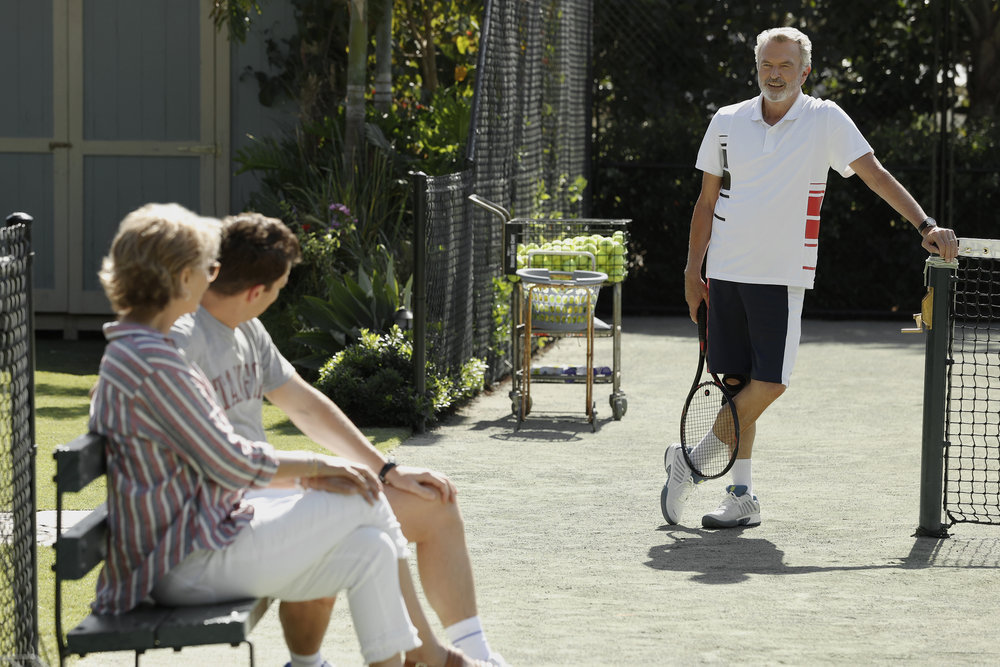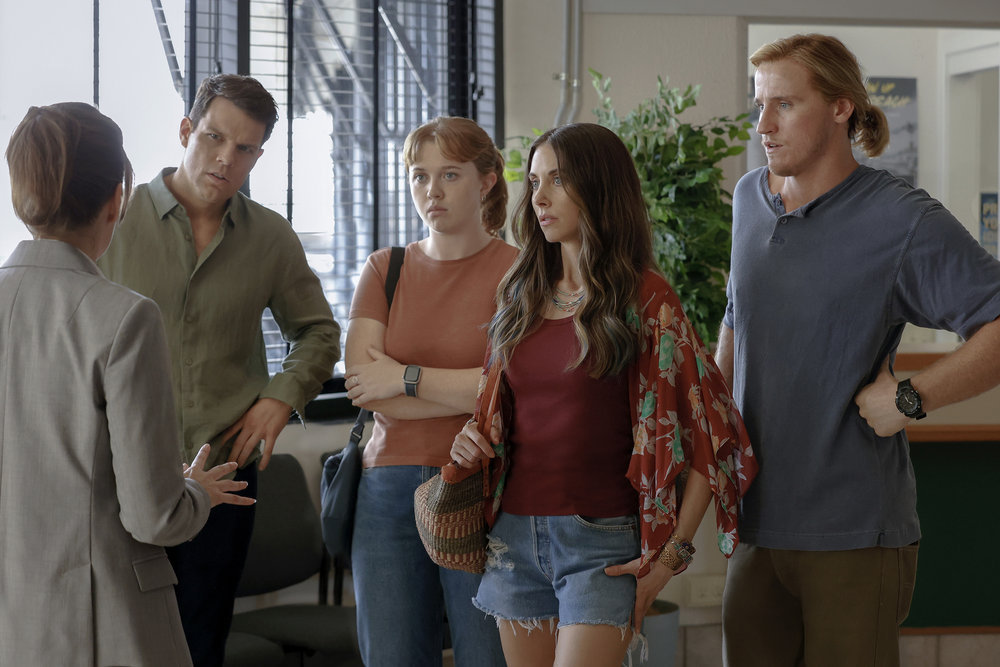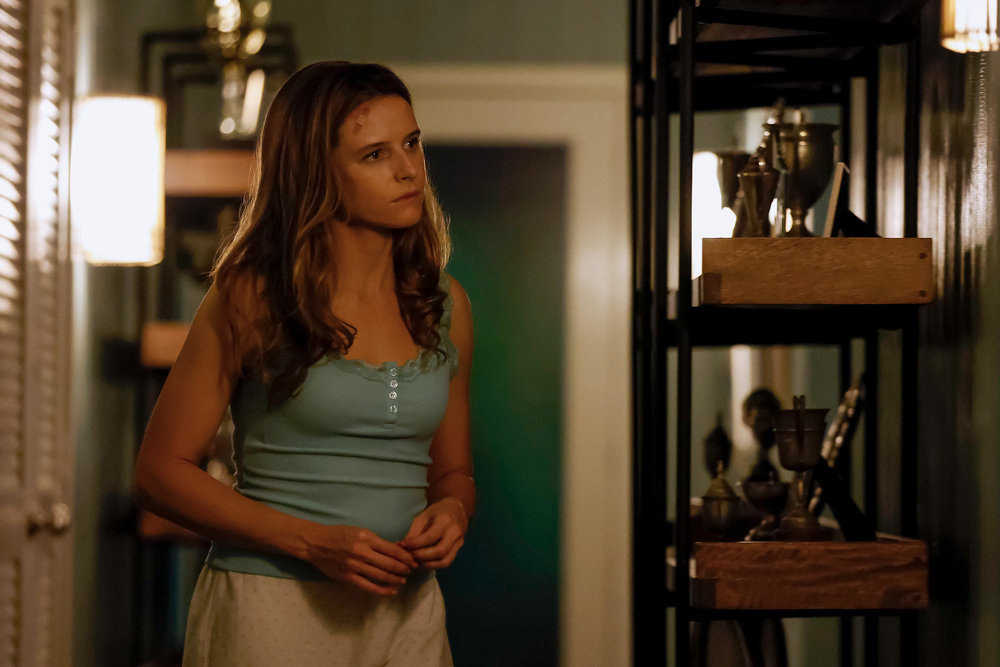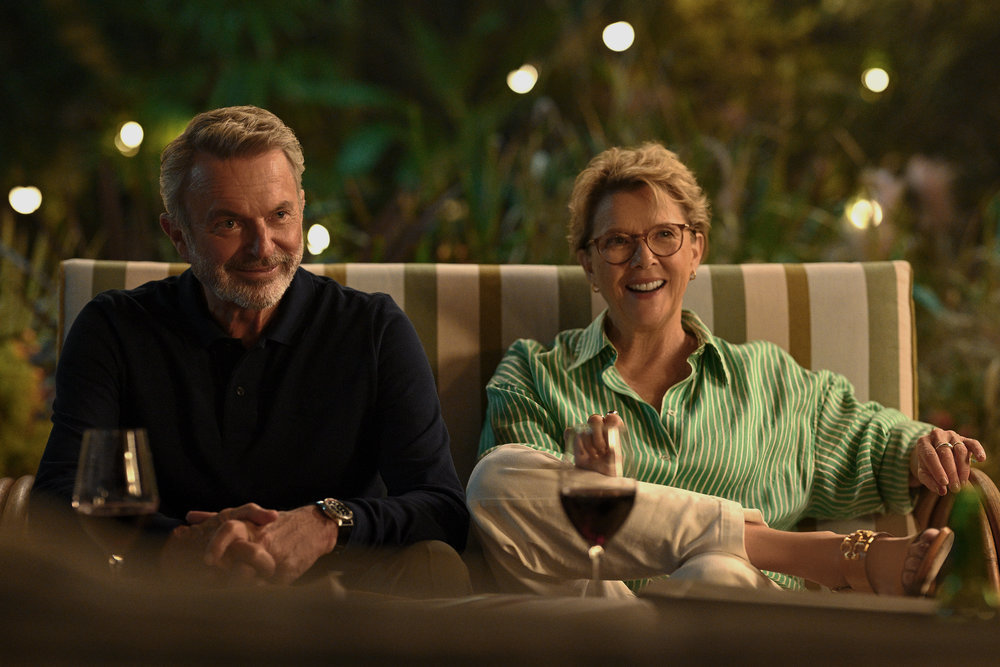Warning: This post contains spoilers for Apples Never Fall.
When it comes to producing a nail-biting thriller with emotional high stakes, you'd be hard-pressed to find material that's filled with more twists and turns than Liane Moriarty's books. Moriarty, the author behind the novels that inspired television shows like Big Little Lies and Nine Perfect Strangers, has a new adaptation to add to her body of work with Apples Never Fall, the new Peacock series that released in its entirety this week, based on her 2021 novel of the same name.
Read more: Breaking Down the Surprise Twist at the End of Peacock’s Apples Never Fall
Like the previous adaptations of her books, Apples Never Fall centers on complex female characters and the challenges that force them to make impossible decisions. Its deep themes on family and many intricate and interconnected storylines are what drew showrunner Melanie Marnich to pursue a television version—and also proved slightly challenging to adapt.
"It was just incredible—the book is just an embarrassment of riches and you just want to use it all," she told TIME. "It was really, really hard to figure out what served the momentum of the show and what served the mystery because you just loved it all."
Below, see how the series departs from its source material and how Marnich thought through those decisions in moving from page to screen.
The setting has changed

In Moriarty's novel, the Delaneys are Australian and live in Sydney. In the Peacock adaptation, Stan (Sam Neill) is an Australian tennis player who moved to Palm Beach, Florida, for his tennis career, which is where he met Joy (Annette Bening) and where they have resided, along with their children, throughout their 50 years of marriage.
The Delaney children's stories are different

In the book, some of the Delaney children's lives and occupations are different from those details in the show. In the novel, Amy is an aimless taste tester in her forties; in the show, Amy (Alison Brie) is in her thirties and an aspiring life coach. Troy is the Delaney's third child and a trader in the book, divorced from his ex-wife for years following his infidelity; in the show, Troy (Jake Lacy) is the oldest son and a venture capitalist whose divorce, also owing to infidelity, is more recent.
In the book, Logan is instead the oldest son. A teacher at the local community college, his girlfriend Indira breaks up with him because of his lack of ambition after years of dating. In the show, Logan (Conor Merrigan-Turner) is the third child and works at the local marina; while he's still dating Indira, she breaks up with him in the series because of his inability to prioritize her and commit to their relationship. While Brooke is the youngest Delaney child and runs a struggling physical therapy clinic in both the series and the book, in the TV adaptation, Brooke (Essie Randles) is engaged to a woman and has an affair with another key character, Savannah. In the book, she's just separated from her husband of nearly a decade.
Marnich believes that these changes helped the show speak to the current moment and also helped to center how each child had a different experience and view of their parents.
"What we really tried to tap into with the show was who they were at their heart and what would be the most active journey for television," she said.
Savannah's backstory is different

In the series, Savannah (Georgia Flood) is revealed to be a con artist whose name is actually Lindsay. She's also the little sister of Stan's former tennis protegée, Harry Haddad; she confesses that she wanted to disrupt the Delaney family's picture-perfect life because she blames them for her unhappy childhood with her abusive mother, which became worse after her brother and father moved out of their home when Stan stopped training Harry. In the book, Lindsay as Savannah has a more complex backstory; while their separated parents each took a child, Harry with their father and Lindsay with their mother, Lindsay was also pressured by her abusive mother to perform at a high level as a ballet dancer. Her mother tightly controlled her eating and access to food to the point that she was often starving, locked in her room with just water on a regular basis. At one point as a child, she came to the Delaney home to pick up her brother and attempted to steal food, but was shooed away instead.
For Marnich, the decision to leave out parts of Savannah's backstory was difficult, but necessary to keep the flow of the show focused on Joy and the Delaney family.
"It's so hard because one of the most delicious elements of the book is the backstory stuff," she says. "But when you're doing an adaptation, it has to live and breathe actively. The family was the here and now and we had to focus on them. If we had more of the point of view of Savannah, it might have shifted some of the energy in the show and shifted the storytelling. You have to be careful about stuff that takes you out of rapidly moving action."
The ending is softened—and doesn't include Savannah

In the show, Joy's disappearance is a decision made on a whim, accelerated by her family failing to appreciate her and by her explosive argument with Stan. She goes to Savannah's off-the-grid house in Georgia, without telling anyone where she's headed. She stays there until she hears about the hurricane in Florida and demands that Savannah drive her back home, which results in a car crash that Savannah flees. In the book, Joy instead leaves home for a remote health retreat with Savannah, leaving a note for Stan on the fridge about her whereabouts that falls off and is eaten by the family's dog. In both the book and the series, during this time, Joy confronts Savannah about lying about her identity and the interference in their lives; in the show, this results in Savannah causing a car accident, whereas in the book, they part amicably.
The biggest departure the series makes from the book is Savannah's involvement; in the finale, Savannah runs away from the site of the car accident before the police come to rescue Joy. She's not seen or heard from for the rest of the series. In the book, the final chapter focuses on Savannah, who's on a flight back home. It's revealed that months earlier, she had locked her mother in a room with just a pallet of bottled water and six boxes of protein bars, recreating the treatment her mother subjected her to as a child. Her return home is to see if her mother has survived. On the plane, she tells a fellow passenger that her mother plays tennis, pointing to how she came to look at Joy as a mother figure.
Of the shocking finale, Marnich says she wanted to preserve the thrilling twist and surprises that were present in the book.
"We wanted her time with Savannah to be part of the mystery and to be part of the jeopardy," she says. "Everybody thinks they know what could have happened. But for the audience to experience yet another twist was really important."
More Must-Reads from TIME
- Caitlin Clark Is TIME's 2024 Athlete of the Year
- Where Trump 2.0 Will Differ From 1.0
- Is Intermittent Fasting Good or Bad for You?
- The 100 Must-Read Books of 2024
- Column: If Optimism Feels Ridiculous Now, Try Hope
- The Future of Climate Action Is Trade Policy
- FX’s Say Nothing Is the Must-Watch Political Thriller of 2024
- Merle Bombardieri Is Helping People Make the Baby Decision
Write to Cady Lang at cady.lang@timemagazine.com